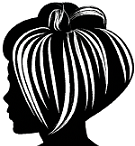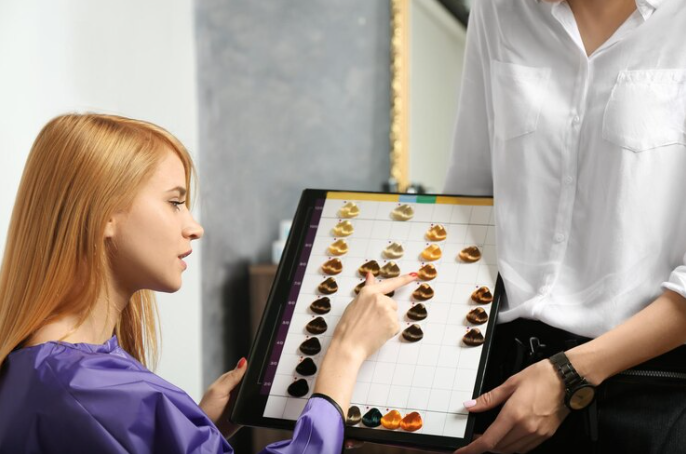How do I match my hair color?
Introducing the artistry of hair color matching: a harmonious fusion of style and personal expression. Welcome to FreeHair, where innovation meets the latest trends in hair fashion and exquisite hairstyling. In a world where individuality is celebrated, the canvas of one’s identity often finds its boldest strokes in the vibrant hues that adorn our locks.
We understand that choosing the ideal hair color is an intimate journey, a narrative woven with personal preferences and style aspirations. Our experts curate a tapestry of insights, offering guidance on color palettes that complement skin tones, enhance features, and embody the essence of individuality. Through meticulous detailing and a keen eye for the avant-garde, we bring forth a plethora of possibilities, ensuring that your hair speaks volumes about who you are.
Matching your hair color involves a thoughtful process to find the shade that complements your skin tone, enhances your features, and aligns with your personal style. Here are steps to help you achieve the perfect hair color match:
How to match hair color to your skin?

Matching your hair color to your skin tone involves finding shades that complement and enhance your natural features. Here’s a guide to help you achieve a harmonious hair-color-and-skin-tone match:
Identify Your Skin Tone
Cool Undertones: If your skin has hints of pink, red, or blue undertones, and you tend to burn more easily in the sun, you likely have a cool undertone.
Warm Undertones: Skin with golden, peachy, or yellow undertones that tan easily under the sun suggests warm undertones.
Hair Colors for Different Skin Tones
- Cool Undertones: Consider hair colors like platinum blondes, ashy browns, cool reds (like burgundy), or icy shades. These colors complement the cool undertones of your skin, enhancing your features without clashing.
- Warm Undertones: Opt for hair colors like golden blondes, caramel browns, copper tones, or warm chocolate shades. These hues complement the warmth in your skin, adding a natural glow to your overall look.
- Neutral Undertones:
If you have a mix of cool and warm undertones, you might have a neutral undertone. You can experiment with a wide range of colors, from neutral browns to soft highlights, as your skin tends to adapt well to various shades.
Consider Contrast:
Contrasting your hair color with your skin tone can create a striking look. For instance, if you have fair skin, darker hair colors can provide a beautiful contrast. Similarly, those with darker skin tones might consider lighter shades for an eye-catching effect.
Consult a Professional:
For a precise match tailored to your unique features, it’s advisable to consult with a professional hairstylist. They can analyze your skin tone and recommend specific hair colors that will complement you best.
Test Before Committing:
If you’re uncertain, try temporary hair dyes, wigs, or extensions in the desired color to see how they complement your skin tone before making a permanent change.
By understanding your skin’s undertones and considering these guidelines, you can select a hair color that not only complements your complexion but also brings out the best in your natural features.
How do I know what skin tone I have?

Unveiling Your Skin Tone: A Guide to Perfect Color Matches
Natural Light Insight
Stand by a window and take a close look beneath your eyes in a mirror. Do you notice a bluish or purple hue (cool tone) or a yellowish or greenish tint (warm tone)?
Blush Experiment
Apply a generous amount of pink blush on one cheek and peach blush on the other. Stand near natural light and observe. Does the pink blush emphasize pink tones in your skin? That signals a cool undertone. If the peach blush brings out golden hues, you’re likely warm-toned. Notice which shade blends seamlessly with your skin – cool tones usually favor pink, while warm tones lean towards peach.
Skin’s Reaction to Sun
Does your skin easily burn? If so, it suggests a cool undertone. On the other hand, if your skin tans quickly, leaving a brownish tint, it’s more indicative of a warm undertone.
White Sheet Test
Drape a white sheet over your shoulders. Observe how your skin appears against the stark white. If it highlights blueish or pinkish tones, chances are you have a cool undertone. Warm tones will notice a yellowish or orangey hue.
Vein Observation
Look at the veins on your wrist. Are they blue? That points to a cool undertone. Green veins? That leans towards a warm undertone. If you notice a mix of both, you might have a neutral undertone.
Understanding your skin tone isn’t just about finding the right hair color – it also aids in selecting makeup palettes and clothing hues that accentuate your natural beauty. Take these cues as your personal guide to unlocking the perfect colors that harmonize with your unique skin undertones.
Jewelry Test: A Clue to Your Undertone
Gold vs. Silver:
Wearing a gold chain and a silver chain can offer insights into your skin’s undertone. Typically, silver jewelry complements cool tones, while gold tends to enhance warm tones. While subjective, this test can aid your decision-making, especially when choosing between two tones.
Discovering Your Undertone
Neutral Undertone:
If your preferences lean towards both gold and silver jewelry, you might have a neutral undertone. Lucky for you, neutral undertones suit various blush shades (peach and pink) and can pull off a wide range of hair color shades.
YOU may be interested in more topics:
hair care routine for low-porosity hair
Elevate Your Locks: Best hair care routine for fine blonde hair
Natured your relaxed: Daily hair care routine for relaxed hair
Hair Color Guidelines for Different Undertones
Cool Tones:
Cool skin tones harmonize well with cool hair colors, characterized by terms like “ash,” “platinum,” and “champagne.” These shades complement cool undertones, especially for individuals with pale or translucent skin. True reds and burgundy also work splendidly for this tone, toning down any unwanted brassiness.
Warm Tones:
Warm skin tones thrive with warm hair colors, featuring names like “golden,” “bronze,” and “copper.” These hues add warmth to the hair, often exhibiting shades of red or gold, beautifully complementing warm undertones.
Identifying Your Undertone
Cool vs. Warm Tones:
Cool tones often display a blue or pink tint, while warm tones manifest with yellow, orange, or even green undertones. For those with ruddy skin, opting for ash or cool hair colors can neutralize any excessive redness.
Choosing Your Perfect Shade
When in doubt, neutral hair colors are universally flattering. Regardless of your undertone, there’s a perfect hair color shade waiting for you, just a click away.
Understanding your undertone through these subtle cues can significantly guide your decisions, whether it’s selecting jewelry or choosing the ideal hair color that perfectly complements your unique skin tone
Achieving the perfect hair color match involves a few steps. Firstly, consider your natural hair color and skin tone as a guide. Consulting with a professional hairstylist can provide invaluable insights into suitable shades that complement your features. Bring reference images to illustrate the color you desire.
Keep in mind that hair dye might appear different on your hair depending on its current condition and previous treatments. Performing a strand test before fully committing is wise to ensure the chosen color aligns with your expectations. Finally, maintaining your new color with appropriate hair care products helps preserve its vibrancy and health.
FAQs ABOUT How do I match my hair color?
How do I choose the right hair color for my skin tone?
Consider warm or cool undertones in your skin warmer tones often suit golden or reddish hair shades, while cooler tones pair well with ashier or platinum hues.
Can I dye my hair at home, or should I visit a salon?
While DIY hair dye kits are available, a salon visit is advisable for major color changes or complex techniques to ensure professional expertise and minimize potential damage.
How can I maintain my hair color’s vibrancy?
Use color-safe shampoos and conditioners, minimize exposure to sunlight and chlorinated water, and schedule regular touch-ups to maintain the color’s freshness and brilliance.

